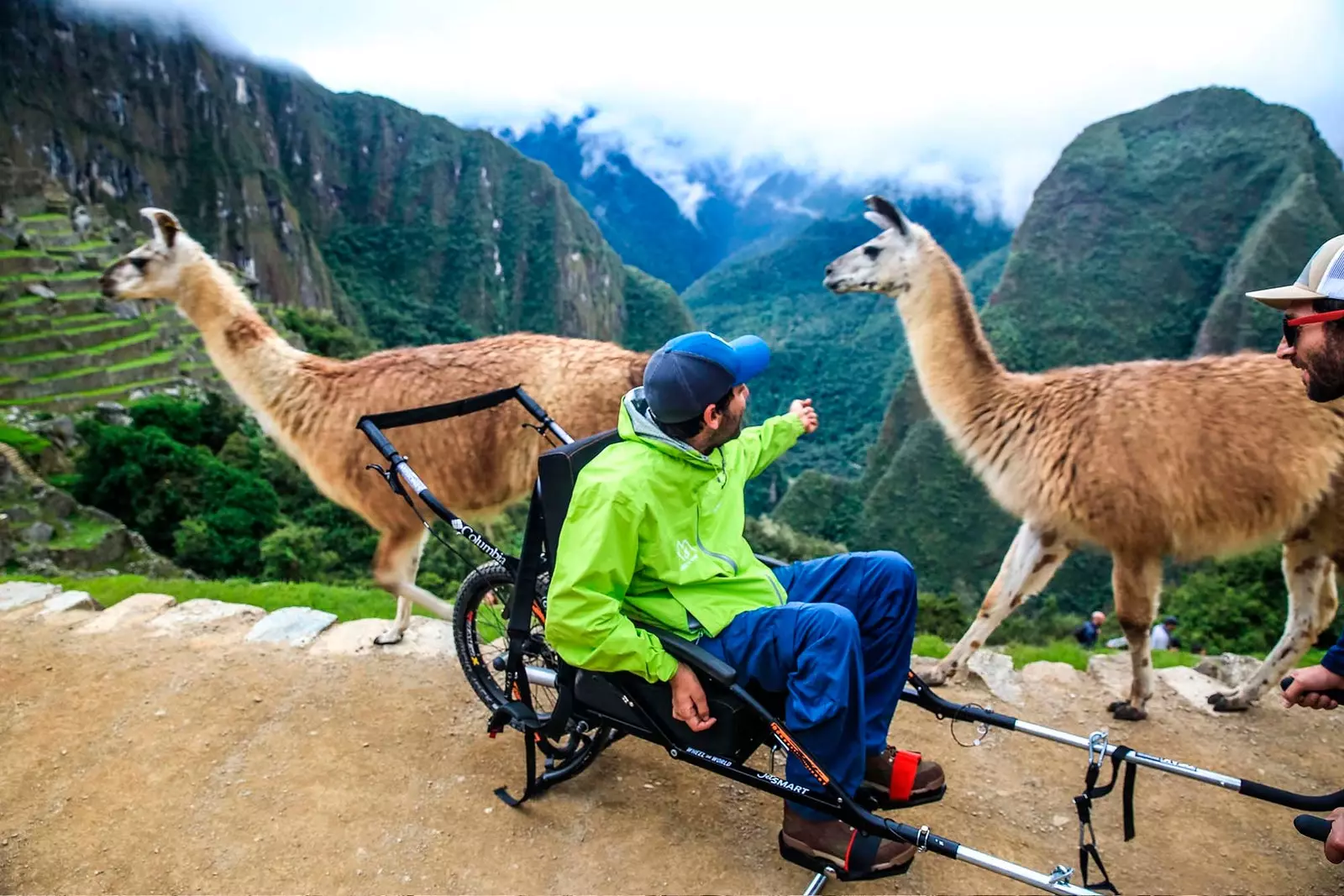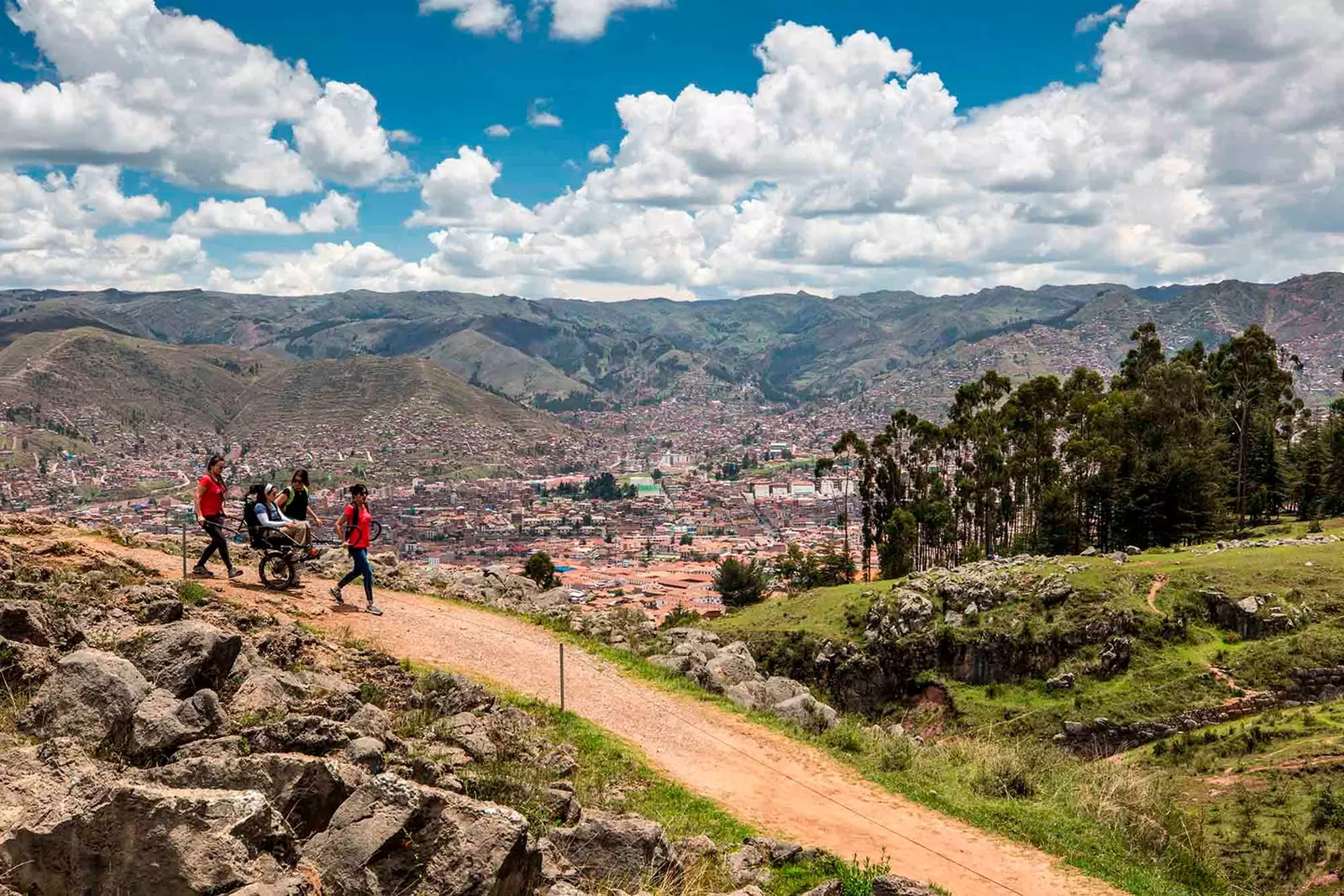the multiple architectural barriers that those who use a wheelchair encounter in their day-to-day life reduce their quality of life, but when they travel it is even worse: there are places that, directly, they don't plan to go. One of them is the Macchu Picchu , “one of the most important of the world; is traveled by some 500 people a day , and it is, without a doubt, an element iconic of South America”, they explain from Wheel The World . This company, aware of the importance of the Inca site, makes it possible for people who cannot walk to visit the monument.
"We have the purpose of enabling the world so that people with disabilities can explore it without limits," explains Arturo Gaona from the company to Traveler.es. “Definitely, impacting an area like Machu Picchu and Cuzco would be inspiring new travelers with disabilities to discover it. Additionally, the personal element is that Alvaro Silberstein (co-founder and CEO of WTW, quadriplegic) was able to visit him at his 16 years , but only for 30 minutes due to a strike on the trains, and since then he had the dream of to be able to visit this magical place again. It was a very special project for Wheel the World, as we seek to consolidate ourselves as a global inclusive tourism enterprise and continue to demonstrate that disability should not be an impediment for people to enjoy this world”, continues Gaona.

Álvaro Silbertein fulfilled his dream of returning
To make adventure possible, WTW uses a trekking chair called Joellette , invented by the French company of the same name. To this device is added the experience and expertise of the guides, whose number changes according to the destination: “It depends on factors such as the complexity of the terrain, the extension of the route, the type of disability of the person and the duration of the trip”, they say from the company. “For our first trip to Machu Picchu, each traveler was accompanied by six people without disabilities, but for example, when we cross the Eifel National Park , three was enough. The important thing is to know the terrain to be able to provide the best experience to the traveler and his companions”, they emphasize.
And at WTW, without a doubt, they know him, since they have been focused on finding since 2017 creative solutions to make amazing and remote places accessible in different parts of the world. “Our project began at the end of 2016 as a trip between friends to Torres del Paine , in Chilean Patagonia. At that time, we had the dream of doing the W circuit of this place with Álvaro”, recalls Gaona. They succeeded, and since then, they have already been the first project of inclusive tourism in getting people with disabilities to explore the North Sierra of Oaxaca (Mexico), in addition to having broken records by carrying out expeditions with people in wheelchairs to the summit of the Toco Volcano -located at 5,600 meters, in the Atacama Desert-, or traveling the 85 kilometers of the Wilderness Trail of the already mentioned Eifel National Park, in Germany.

Sacsayhuamán, in Cuzco, is another of the visits of the Peruvian itinerary of Wheel The World
“Today, we are a team of eight people located in four countries and dedicated to make this world a more accessible for tourists with different disabilities; Although we have worked a lot with people in wheelchairs, we have also done it with people with visual, hearing, or cognitive impairment ”, summarizes Gaona.
"The world is a amazing place and you have to go out and find out," she continues. "It's normal to have fears and doubts when traveling with a disability; at WTW we think the first barrier is The access to the information , and it is part of what we seek to change in our platform, in addition to having a customer service team willing to resolve any type of doubt you may have”, they break down.
Your advice to those with a disability? That they take the first step and put themselves in his hands to carry out some of the multiple itineraries they propose through Chile, Peru and Mexico. "More than a group of clients, we are forming a community that is going to change the way people travel around the world”, they indicate. And, as a picture is worth a thousand words, they urge us to see Return , the documentary of that first trip to Machu Picchu.
“At Wheel the World we are moved by being able to change people's lives ; it's amazing what happy that they are after crossing a forest or kayaking on some glaciers. Nevertheless, It is not a simple task: it takes a lot of creativity, the world is full of barriers and each trip is different. Also, there are variations depending on the type of disability. But definitely it's very worth it ”.
